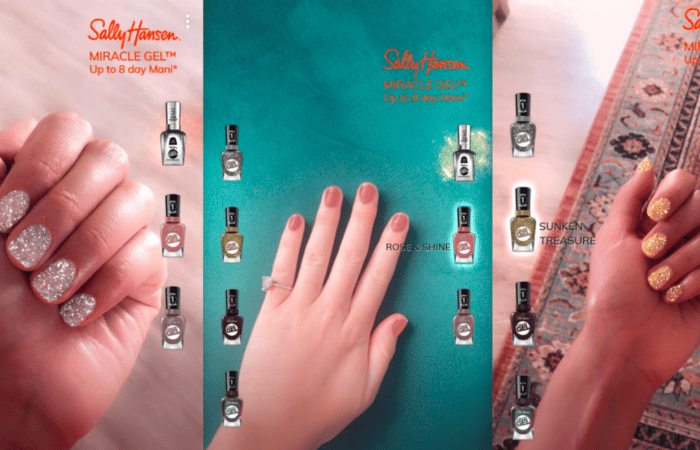Author: All Season Zenith
Challenge
Libresse is a global brand known for its period care offering. To grow and remain relevant in a declining Feminine care category, Libresse expanded its offering for women’s intimate area into washes & wipes. It wanted to enter this category with stature, distinction and relevance.
Libresse is a straight-talking/taboo-breaking brand that respects women’s needs. The challenge was to translate our understanding of women’s reality into intimate care and stay true to our taboo-breaking values and behaviours as a brand in a highly sensitive environment.
Insight & Idea
The approach in this category hasn’t changed for decades. It reinforces the fear of smelling bad, and portrays perfectly normal discharges as body leakages that need fixing. In other words, it broadcasts a sense of shame to women.
We conducted quantitative research (8,000+ women) across multiple countries and fastidiously reviewed academic studies and poignant articles. The same themes kept cropping up again and again, which led us to our insight:
There’s an unhealthy quest for the perfect vagina: 44% of women are embarrassed by their vulvas and 57% feel pressure for it to look a certain way (Essity quantitative research) – as a result, labiaplasty (the procedure to alter the labia) was the fastest-growing cosmetic surgery in the world, up 45% in 2016 vs. 2015 (ISAPS). This toxic quest is fuelled by societal shame and censorship around women’s genitals.
To show women how much we care, we overturned a long history of shame and objectification to respectfully shatter the myth of the perfect vulva!
Execution
Results
Released in the Nordics, the campaign received immediate praise in media globally.
Paid media:
- Reached 90% of our target with 32m impressions, 21% over-delivery
- Facebook/Instagram/Snapchat delivered 37% of impressions, despite only a 16% share of ad spend, leading towards a lower CPM vs estimated
- Achieved best view (12.5%) and engagement rates (0.8%) of any product campaigns to date
- YouTube Brand Lift Study: 35.3% lift in Brand Awareness = ‘Best in class’ performance
It smashed all brand metrics. Most importantly, the ‘brand seems different in the category’ metric more than doubled versus norm (Ipsos, Dec. 2018).
A new entrant, we immediately met and surpassed targets, and Libresse wipes’ market share reached 33% five weeks after launch (Nielsen, Dec. 2018).
Viva La Vulva gaining the right to exist was a very hard battle with our media owners, but it paid off handsomely in the end:
The campaign was a glittering success driving brand consideration and sales.
ROI
More of our work









Coty Max Factor
- Post author By All Season Zenith
- Post date March 30, 2023
- No Comments on Coty Max Factor
Challenge
Max Factor is a hallmark brand in the world of beauty and enjoys near-universal awareness (94%). However, eroding salience and a growing disconnect between the brand and its customer base meant doing something drastically different to make Max Factor mean something more to a 35+ female audience; this is a group who had a fundamentally different relationship with make-up compared to their millennial counterparts.
While most beauty brands turn to TV, we needed something else – something unmissable.

Insight & Idea
Mirroring classic, Hollywood glamour
We would draw on Max Factor’s historic reputation: classic glamour, make-up artistry and Hollywood. And there was only one place this campaign could shine: the silver screen.
Knowing our audience go to the cinema approximately twice a year, we partnered Max Factor with Murder on the Orient Express and The Greatest Showman. Both films were pegged to be the biggest blockbusters for 2017, and had leading ladies who resonated with our audience.
We created bespoke content for the cinema in the form of make-up tutorials that recreated looks donned by the leading ladies in each film.
Aimed at our female audience in their ‘rediscovery stage’, looking to become their best selves, we showed how easy it could be to recreate ‘film star’ looks at home with a product range that could embrace and empower them.
Execution
The Plan: A series of unmissable blockbusters
Joining forces with 20th Century Fox, Digital Cinema Media and Recipe, Max Factor combined film footage with tailor-made tutorials led by brand ambassador Caroline Barnes.
In a media first, we partnered solely with flagship cinema venues – Picturehouse, Everyman, and Curzon – to bring a range of on and off-screen activity to life including events, takeovers and competitions.
But we didn’t stop there – Max Factor hosted four premier-style events.
Content was amplified through social and YouTube to further increase the reach of the campaign and create more excitement around the film launches.
The campaign was a glittering success driving brand consideration and sales.
ROI
Healthy Skin Harmony (the lead product) saw 3.5% value sales growth (the overall foundation category was in decline over this period). Max Factor was the #1 selling brand in self-select cosmetics over December – the thick of the campaign period. The rest, as they say, is history.
More of our work









Sally Hansen
- Post author By All Season Zenith
- Post date March 29, 2023
- No Comments on Sally Hansen
SALLY HANSEN USA FIRST-TO UNVEIL SNAPCHAT TRY-ON NAIL LENS A/R TECHNOLOGY
The Insight
The rise in social and digital consumption will accelerate artificial intelligence (AR) for beauty testing, discovery, and customization (McKinsey study)
The Opportunity
Zenith & Sally Hansen partnered on first-to-market snapchat nail AR technology, a first on the platform
The AR Filter
#1 Set Up
User’s Selfie view with Sally Hansen Miracle Gel in upper right hand corner
#2 Play
When selecting a Miracle Gel colour, user enters AR World lens experience transforming user’s nails into chosen colour.
#3 BUY
Shop Now button at the bottom of screen allows for immediate purchase.
More of our work









Key trends from CES
- Post author By All Season Zenith
- Post date January 13, 2023
- No Comments on Key trends from CES
- Thoughtful Leadership
Key trends from CES
CES may be over, but the technology and innovation showcased in Las Vegas will keep our industry buzzing throughout the year. At Zenith, we believe in creating seamless experiences that drive ROI. Technology is undoubtedly enhancing these experiences, so it’s imperative that brands understand how it delivers growth – for their customers and their business.
To summarise the week, working with our friends at Digitas, we identified three key trends that will help optimise how we speak to consumers:
- Technology is increasingly implicit vs. explicit; improving our quality of life “in the background.”
- The provenance and ethics of technology is now an important consideration when selecting a brand.
- AI has shifted from a buzz word to a fundamental enabler of personalised consumer experiences.
Get In Touch
Find Out More..
Our Work
Find Out More..
Our People
Find Out More..
2022 Year in Review: Impact of Apple’s ATT
- Post author By All Season Zenith
- Post date January 13, 2022
- No Comments on 2022 Year in Review: Impact of Apple’s ATT
When Apple introduced the new App Tracking Transparency Framework (ATT) to iOS 14.5 devices on April 26th 2021, it was expected that the policy would disproportionately impact social media apps like those from Meta, that use off-platform data signals to power ad personalisation and measurement. The industry consensus – and warning from Meta – was that advertisers were likely to experience rising costs; in their Q2 2022 earnings call, Meta cited “signal loss from Apple’s iOS changes” as a continued challenge, with CFO David Wehner forecasting earlier in the year that the overall impact of iOS as a headwind on the business in 2022 would be in the order of $10 billion*.
But was the impact felt by agencies and advertisers? Natalie Carder, Head of Paid Social at Zenith, reflects on the global effect of ATT on Meta advertising costs.
- Year-on-year analysis found that the ATT update had a mixed impact, with differences expected due to a geographically varied mobile operating system market share as well as varying degrees of reliance on off-platform signals for targeting or optimisation, according to advertisers’ marketing goal.
- In iOS dominant markets like the US and UK, there are signs that website sales-focused investment shifted from iOS towards Android after ATT, suggesting a loss in signals from iOS devices. There was also an upwards trend in traffic costs on iOS devices compared to Android. However, the impact on end ROAS varied with advertiser agility. Advertisers who embraced experimentation overcame the impact of signal loss through strategic optimisation. Black Friday results for one global advertiser show the benefit of a test-and-learn framework, with YoY ROAS in the UK increasing by more than 50%.
- Cost-impact on brand metrics is harder to unpick, but analysis of some of our largest global advertisers suggests a year-on-year reduction in CPMs in iOS dominant markets, with average CPM falling 10-50%.
- Similarly, in Android dominant markets, both brand and performance advertisings costs were more likely to trend downwards than upwards.
- Overall, the average price-per-ad decreased 18% year-over-year according to Meta’s Q3 earnings results.
So, it would seem like the headwinds of ATT were not felt with the severity that Meta and the wider industry predicted. Clearly there were other auction-dynamics at play, or perhaps we have our agency specialists to thank for diligent optimisations.
*Sources:
Analysis based on 2022 YTD average CPM and average CPLC vs 2021, select global clients
Meta (2022). Q2 2022 Earnings Call Transcript, Meta (2022). Third Quarter 2022 Results
Business Intelligence – Beauty and Personal Luxury
- Post author By All Season Zenith
- Post date February 8, 2021
- No Comments on Business Intelligence – Beauty and Personal Luxury
Welcome to Zenith’s Business Intelligence report on beauty and personal luxury, the third in a series that analyses the advertising, business and consumer behaviour trends shaping different categories.
Like all categories, beauty and personal luxury were deeply disrupted by the pandemic, but the changes in consumer behaviour affected different types of product in different ways. Demand for cosmetics and perfumes fell swiftly as people stopped meeting in person, but sales of skin care and hair care products held up as people focused on giving themselves small treats at home. Skin acre and hair care are also expected to lead growth during the recovery.
Faced with an entirely new and unexpected environment, some beauty brands led the way in using digital media for communication and commerce in 2020. They have been rapidly developing ecommerce technology that gives consumer the confidence to try on products and buy them remotely, while using digital media to substitute effectively for falling traditional magazine and television audiences. But the category as a whole is lagging behind and needs to follow their lead if they are to capitalise on the resurgence in demand expected in 2021 and 2022.
Consumers have changed a lot over the last year, becoming much more vocal about environmental damage and social injustice. Beauty and personal luxury brands will need to do even more to demonstrate to demanding customers how they benefit the world and society.
To view the full Business Intelligence report, please sign up to our mailing list.
Please view in a maximised pdf reader like Adobe Acrobat Reader for the best viewing experience.
Get In Touch
Find Out More..
Our Work
Find Out More..
Our People
Find Out More..
The future of TV?
- Post author By All Season Zenith
- Post date December 22, 2020
- No Comments on The future of TV?
Benoit Cacheux, Global Chief Digital Officer at Zenith, recently joined the virtual panel, “Understanding identity, behaviour and context,” at Mediatel’s The Future of TV Advertising Global conference. This event was moderated by Cadi Jones, Commercial Director EMEA at Beeswax, and Benoit was joined by Lara Izlan, Director, Advertising Data & Analytics at ITV, Steve Martin, MD International Data at LiveRamp and Miles Pritchard, Managing Partner – Data Management Solutions at OMD. Below are some of the areas the group discussed with Benoit’s contribution.
Survival of the third-party cookie post the upcoming Chrome changes.
With Chrome reaching a global penetration of 70%, and Safari and Firefox at about 18%, it has become very clear that the third-party cookie in its current form is unlikely to survive. However, we see new ideas coming up on how to replace the third-party cookie and are very positive about what the industry is doing to reinvent digital marketing.
First party data has never been more important, especially for advertisers who have been reliant on third party data. A deep focus on first party data can help advertisers unlock new opportunities for efficiency and effectiveness.
We see many interesting initiatives worth evaluating and testing; think what the TradeDesk is doing with their unified ID 2.0, what ID5 is doing with publishers, clean rooms for log-level analysis, Google with Ads Data Hub on Google Cloud, Liveramp, etc.
Last year, Publicis Groupe acquired Epsilon, a leader in data, which built an identity graph that is not reliant on third party cookies. We’re using this opportunity to share their latest survey on this topic, which is available here.
Headlines from their survey shows the level of anxiety these upcoming changes are creating:
- Most marketers are very or moderately reliant on third-party cookies.
- Less than half of marketers feel “very prepared” for the change.
- Actual benefits to consumers are in question.
- Seventy percent of marketers believe digital advertising will take a step backward.
The depreciation of the third-party cookie and the potential impact for addressable TV and premium video.
Whilst the changes linked to the post-cookie world are not positive (GDPR was the first big negative impact on the digital user experience, and the disappearance of third-party cookies could be the second significant trigger for an even worse user experience), you have to be objective about the current situation and where the money goes when we talk about addressable TV and online video. The reality is a large majority of this inventory is not reliant on third-party cookies (including Adsmart, broadcast video-on-demand, YouTube and video on social platforms).
Back to the future, are we entering a new era for contextual targeting?
There’s no doubt contextual targeting is growing; we’re seeing industry stats confirming its growth. Contextual advertising is forecast to grow worldwide by 18.5%. But we’re not going back to the future because contextual is getting much more sophisticated than before with the use of machine learning techniques, such as natural language processing techniques, used to understand context beyond a few keywords in a URL or webpage content.
It’s also growing because of its ability to offer a whole new way to look at brand safety and have a smarter approach at driving reach (vs. blanket exclusion lists).
Likely winners in a post-cookie world.
We see different type of winners: the most likely ones are the walled gardens. Publishers who have been smart with data acquisition, paywalls and who are working on stable identifiers will also be able to compete and win their fair share.
The losers are the ones who are standing still and not proposing solutions. I do worry, however, about more traditional publishers who are not trying to take control of their destiny.
Concerns around the possibility of fraud in the connected TV environment.
Connected TV (CTV) and over-the-top (OTT) programmatic advertising have gained exponential popularity. In 2019, these forms of content consumption reached new highs following rapid growth. Together they showed a 330% global rise with at least 50% quarter-over-quarter growth, according to Pixalate. Digital marketing measurement provider DoubleVerify outlined a surge of fraud in CTV platforms in a report detailing the state of the market in 2020. For example, DoubleVerify claims to have found 1,300 fraudulent apps in CTV since March 2019 (60% were detected in 2020 alone). It measured a 161% increase in fraudulent CTV traffic rates in Q1 2020 vs Q1 2019., which shows how careful we should be when buying in this area.
You should select the best ad verification companies specializing in connected TVs to help you control performance on CTV. We would also recommend spending time curating your own CTV inventory, so you limit the number of partners and publishers and strive for quality over quantity.
